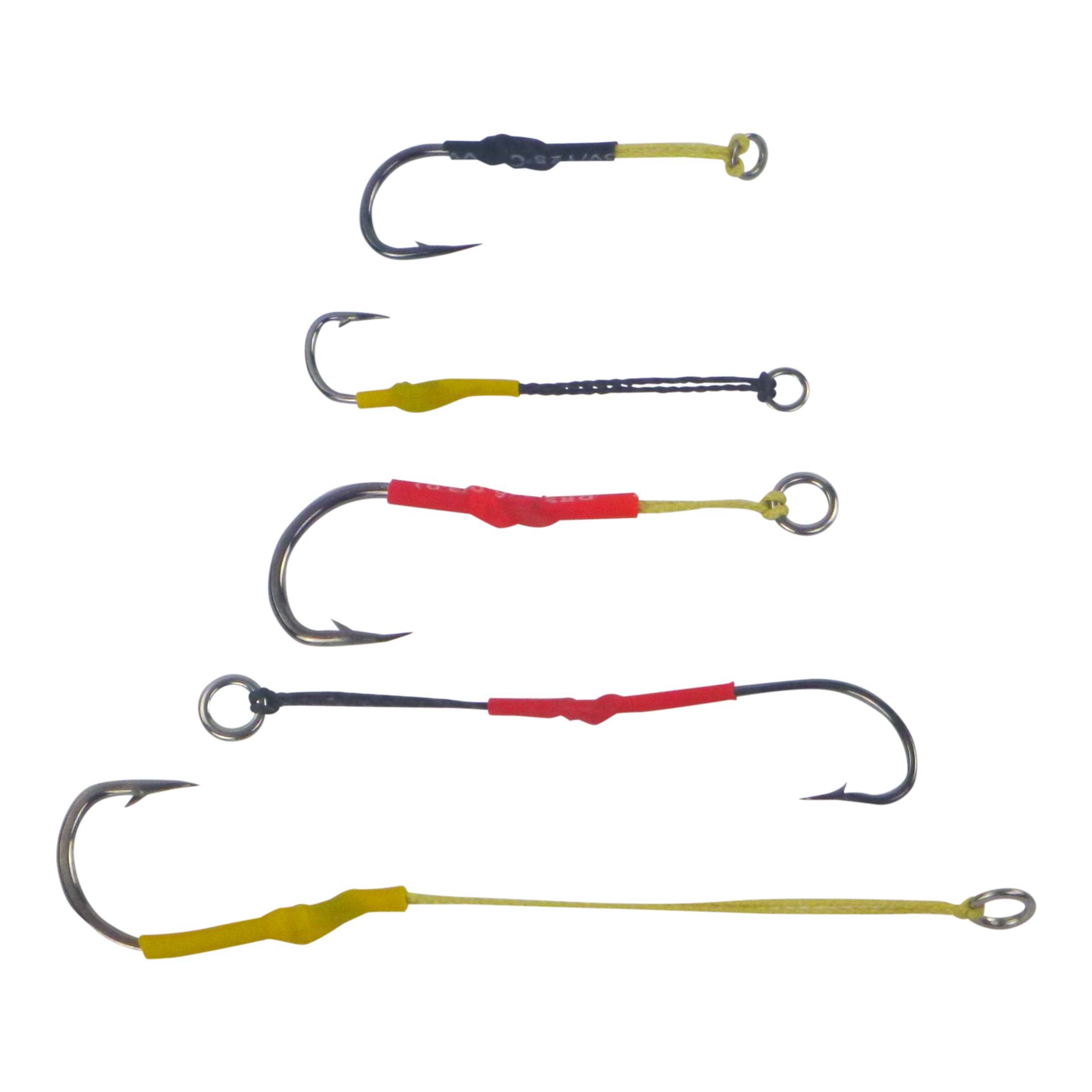How to make Jig Assist Hooks

Every angler has his or her own ideas about tackle, and there are aspects of some commercially-made assist hooks that may not suit everybody. Positioning of the hook along the length of the jig is one such example.
Assist hooks can be fished as a single hook or in tandem. While there is a slightly better hook up rate with two hooks, it’s better to use a single if you plan to release your catch. With two assist hooks, fish tend to be caught in the mouth, while the other embeds in the side of the head or body, which damages the fish and it takes more effort to land it because you’re pulling the fish sideways.
We found this helpful guide on How to make your own Assist Hooks for jigging with metal lures. The parts you will require to make your own Assist Hooks can be seen by clicking these links -
- Jig Assist Lines, Kevlar and PE
- Heavy Duty Jigging Hooks
- Split and/or Solid Rings
- Heat Shrink Sleeves
These are all available from Swimerz. Complete Assist Hooks can also be seen here.
